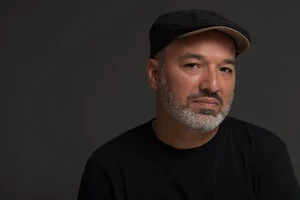Ney
Turkish FOLK INSTRUMENT
INSTRUMENT INFORMATION
The ney, which comes from the Middle East, is a member of the woodwind family of instruments. Neys have been a part of Middle Eastern folk music for as long as 5,000 years, which makes it one of the oldest instruments still in existence. Neys are made of long hollow tubes; traditionally these tubes are made of bamboo or cane, but modern neys may be made of plastic or metal. The player blows air into the tube from one end, typically through a round mouthpiece. The tubes have five or six holes on one side, and a single hole on the back; the player covers the holes in various combinations in order to produce different pitches on the instrument. The Turkish ney, which is featured on this page, typically has six finger holes on the front, and one thumb hole on the back. Neys can be heard throughout Middle Eastern folk music, but similar instruments can be heard in parts of Europe and Africa.
MEET THE INSTRUMENT
In the following video (2:02), Dr. Ozan Aksoy presents the Turkish ney, and details how this instrument is constructed and how it makes sound. This video can be enjoyed along with your children in class:
After watching the video, you can engage the children in discussion about what they remembered or noticed about the ney. Children may share ideas about other instruments that it reminds them of, or other music or sounds that they have heard before. Some questions that may initiate a discussion:
Do you remember some of the names of the parts of the ney?
What did Ozan do to make sound on the instrument?
What is the ney made of?
Does this remind you of any other instruments that you have seen before?
MUSIC
In the following videos, Ozan performs several traditional pieces on the ney. You may choose to play these videos together in the same class session, or play them over several days to create multiple music experiences for the children.
With each experience, you can watch and listen along with the children. While listening, you may notice that the children move their bodies along with the music, and naturally show what they hear through bouncing, clapping, dancing, patting their legs, or almost any other movement that you can imagine! This is part of their music learning, and you can encourage them to move while they listen.
After you watch and listen to each video, depending on the age of the children, you may initiate a discussion about what they heard and saw. Children often feel more comfortable contributing if the questions are specific; abstract questions (such as “how did it make you feel?”) may be difficult for the young child to answer. Some questions that you may consider are:
Was the music fast or slow? Loud or soft? Smooth or choppy? (etc.)
Did any of the pieces have words? Were these words that you have heard before? Did you hear any new words?
Did this music remind you of other music or sounds that you’ve heard before?
What kinds of movements did you make when you were listening?
And, after you have listened to all three pieces, the children may be able to make comparisons:
What was the same about these pieces of music? What was different?
Listening Experience #1 (1:36)
Ozan shares a folksong from Turkey, called Mamoş.
Listening Experience #2 (0:50)
Ozan shares an Excerpt from a traditional Ilahi from Turkey. Ilahis are spiritual songs that are sung and danced by some Muslim people, particularly those that follow the Sufi tradition that was first established in Turkey during the 12th century.
Listening Experience #3 (2:06)
Ozan shares Rindê, a folksong with words in the Kurdish language. Rindê, which means “beautiful,” is a love song.
More About the Ney
Creating Expression on the Ney
In this video (2:32), Ozan shows us how he can use movements to change the sounds of the ney, creating what musicians call different types of expression.
ABOUT THE MUSICIAN
Born in Turkey, Ozan Aksoy grew up in a multilingual household where music was always present. Ozan then developed an interest in music and began learning the saz, a long-necked lute. In college, he performed with a re-known music group called Kardes Turkuler (Ballads of Solidarity), and then he came to the U.S. to do a doctorate in ethnomusicology. Ozan is currently a faculty member at NYU, where he teaches world cultures and the Middle East. He has extensive experience in musical arts and especially in the cross-section of music and education. Dr. Aksoy is also a Summer Music Partnership Program faculty member at Diller-Quaile, and a guest artist in the Early Childhood Department. You can hear his music at ozanaksoy.hearnow.com.

